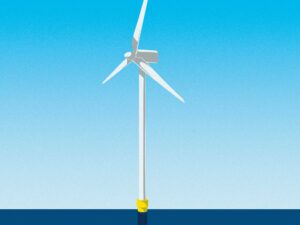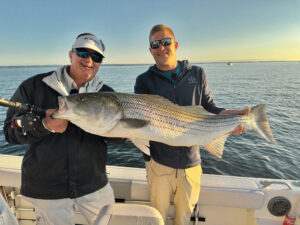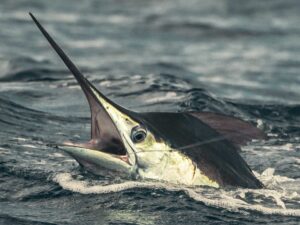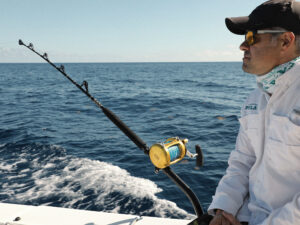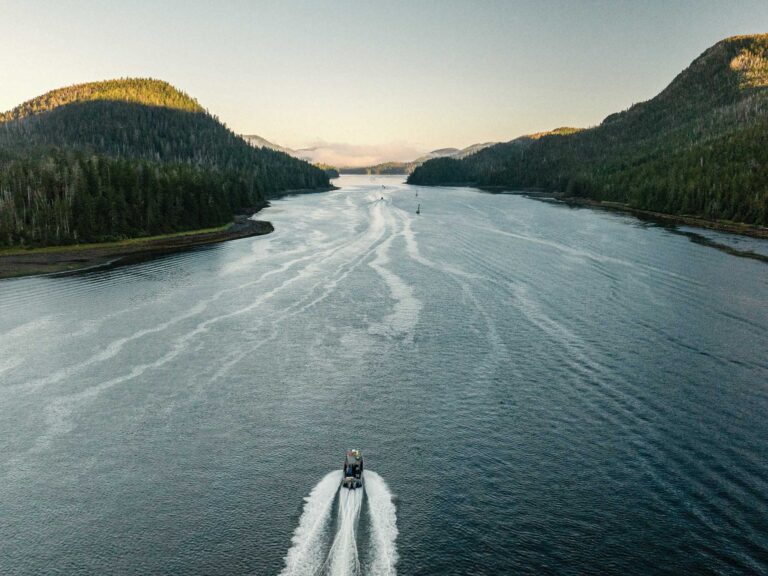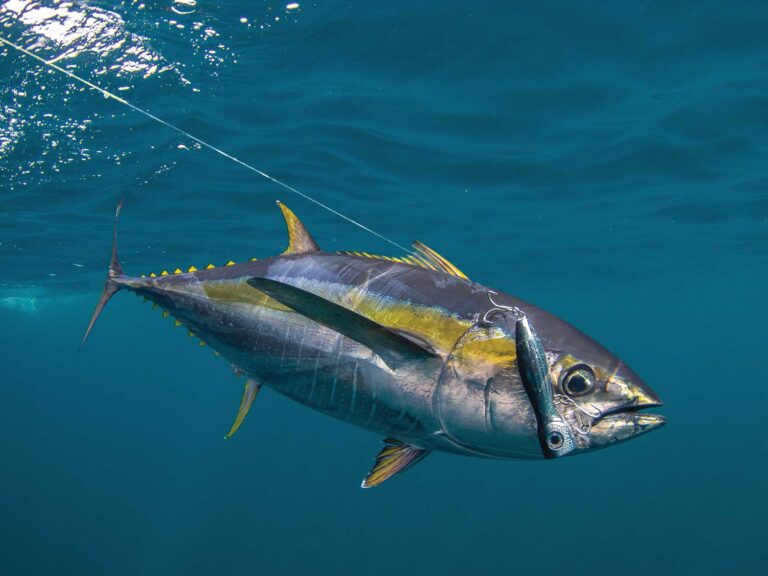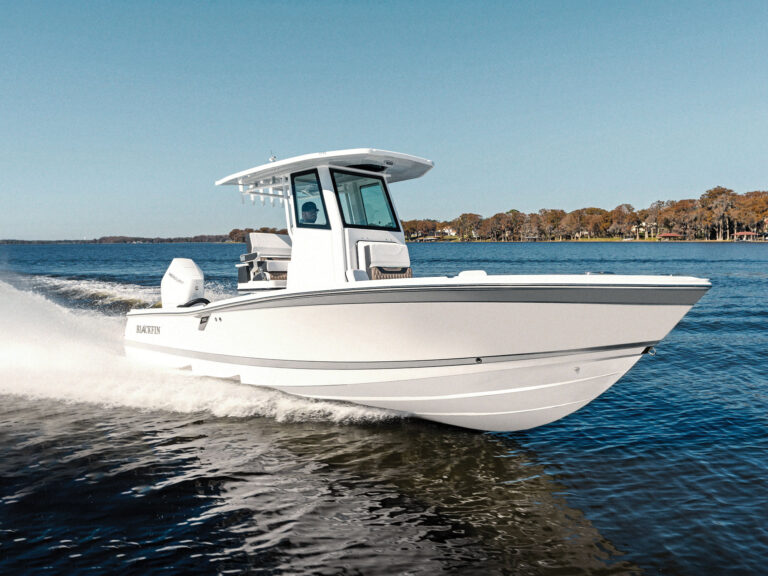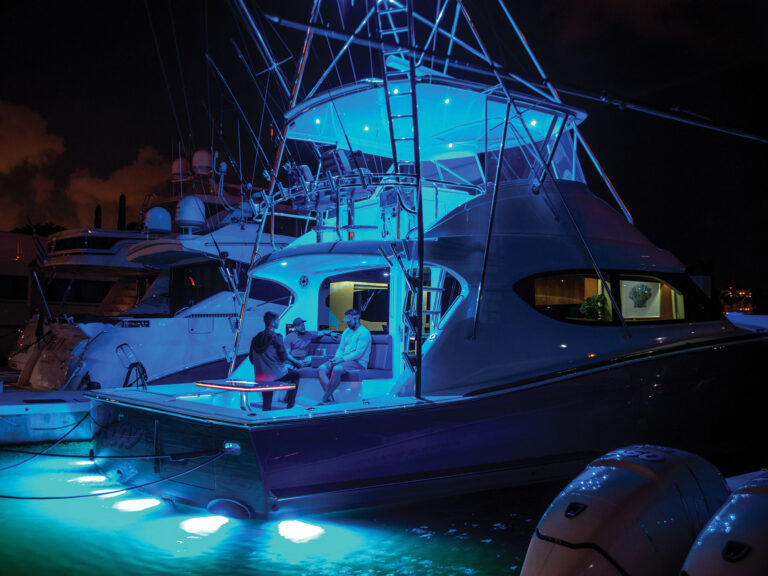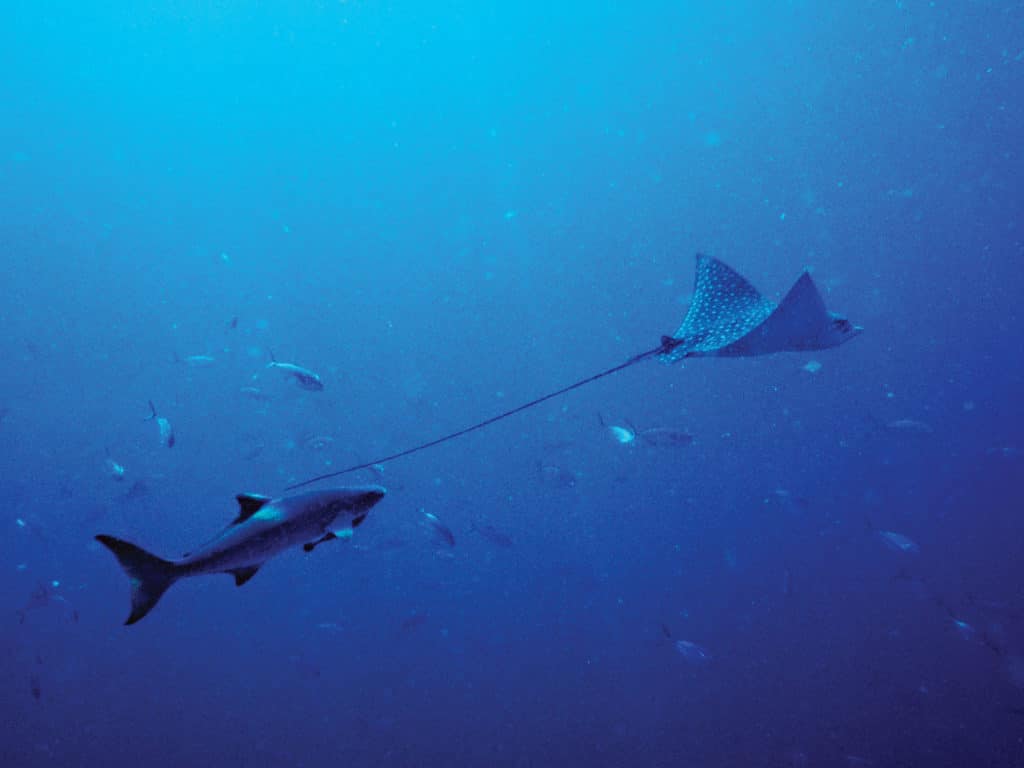
It was hot and steamy offshore, typical of Florida in June. Scott Jones, his young son and a youthful buddy had just bounced through the St. Johns River Inlet off Mayport to target kingfish, but 4 miles offshore he came across a well-defined tide rip set up by the outflow of the St. Johns River. He slowed his 19-footer to check the rip and immediately spotted a manta ray the size of his boat.
“It was covered with cobia, so I cast a Cobia jig, and it was game on,” says Jones. “That fish was a keeper, 20 pounds or so. But there were manta rays and cobia everywhere.” Conditions were perfect and the water clear, and the anglers lost a lot of time fighting fish while rays and cobia paraded by.
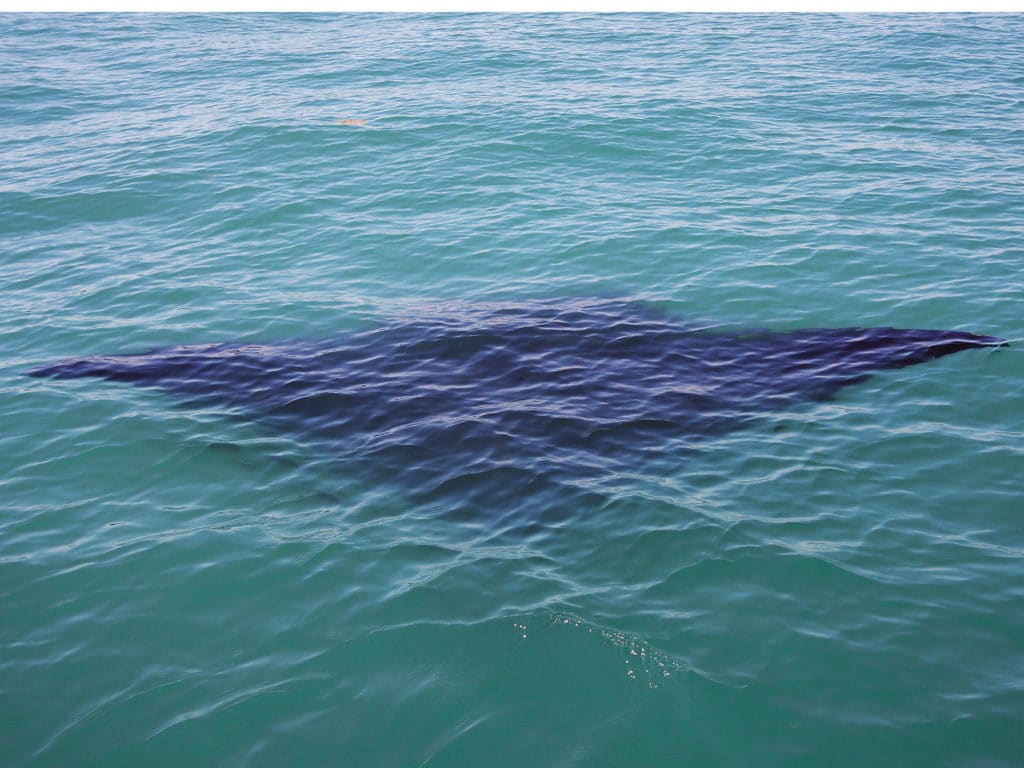
Cobia Fishing Along the Beach
At the end of the day, they’d caught nine cobia to 40 pounds, long after the historically prime Jacksonville cobia fishing season of March through May. During that three-month period, cobia commonly are found hugging manta rays within just a few miles of area beaches.
“Northeast Florida (Matanzas Inlet to Fernandina Beach) spring beach cobia fishing starts once surface water temperature is 68 or 69 degrees,” Jones says. “It stays good nearshore until it gets into the mid-70s. By summer the fish either move offshore, scatter or head north. Big schools are hard to locate in summer, but they can suddenly pop up almost any time, even in hot weather, so you’ve got to be ready for them. I was tarpon fishing one August day with my girlfriend, Leslie Martinez, and she caught a 50-pound cobia that suddenly appeared near a bait pod.”
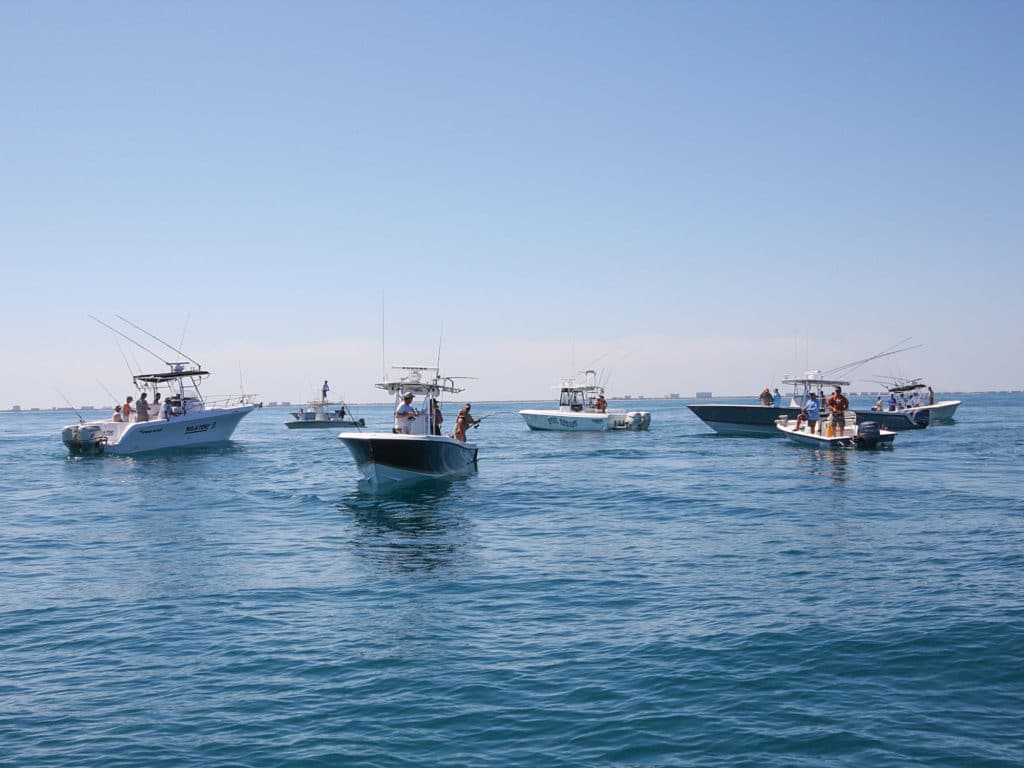
Best Water Temperature for Cobia Fishing
Suitable water temperature is fundamental to finding Florida cobia, contends Jacksonville Beach angler Nathan Stuart, 32, captain of the 25-foot Contender bay boat Seafood Kitchen, a frequent top finisher in local cobia tournaments.
“Cobia want 69- to 71-degree water temperatures, which triggers our beach run with manta rays,” he says. “That’s fun sight-fishing. But beach fish are widely scattered, and there’s lots of pressure from guys running nearshore spotting rays and casting. I think our best cobia fishing happens after summer when the fish run larger, consistently in the 20- to 40-pound class. The fall to winter cobia run offers the best chance for big fish.”
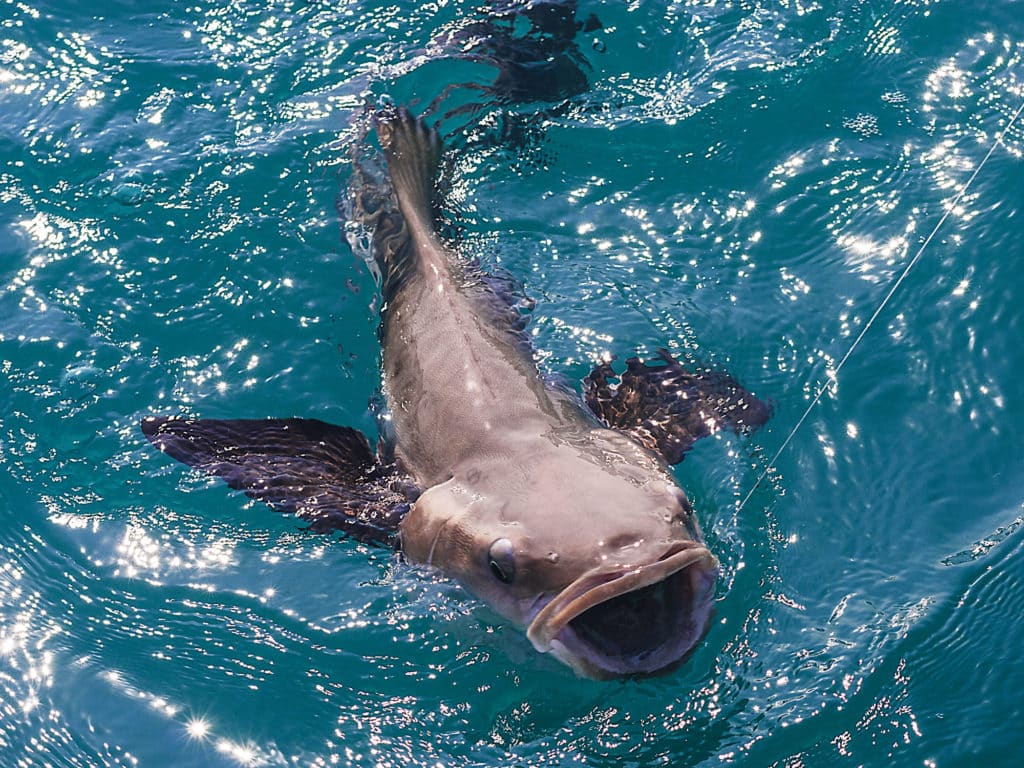
Fall Cobia Fishing
There’s also a short-term push of cobia fishing in the fall as surface water temperatures begin to drop. And nearshore sight-fishing can be excellent in early fall. “I spend a lot of time watching sea-surface-temperature charts, and when it gets to about 68 degrees, I look for an autumn run of cobia in shallow water near beaches,” says Tony Eden, longtime Jacksonville cobia angler and owner of Boatronics custom boat shop. “The November to December cobia fishing doesn’t last long. Strong wind and bad weather can be a problem in fall. But fishing pressure is minimal, and there can be lots of fish on rays out to about 60 feet of water.”
Perhaps the most consistently good Northeast Florida cobia fishing comes in late fall and winter, when surface water temperatures on area reefs and wrecks hit the magic 68- to 72-degree window.
“Find that water temperature on a high-profile wreck or reef that has bait schools, and it can be a red-hot spot for hammering heavy cobia,” Eden says. “It gets good in December and January, with fish steadily moving farther offshore to stay in 68- to 72-degree water as the weather gets colder. I got my biggest cobia in January way offshore in 150 feet of water. By February it starts warming, and I’ll start cobia fishing shoreward again, usually starting off Matanzas Inlet.”
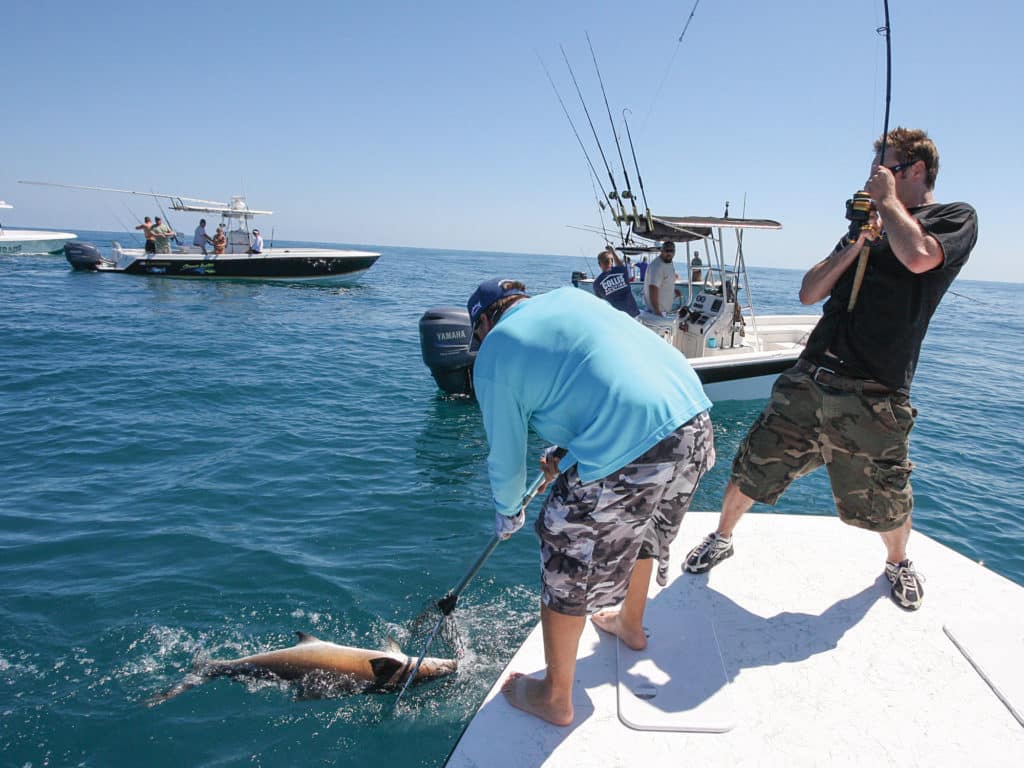
Stay on the Move When Cobia Fishing
This is run-and-gun fishing, and efficiency in pinpointing the reefs with perfect temperature and bait are key. A number of captains have honed this fishing to perfection, fishing out of fast 22- to 30-foot boats, and jigging to locate and catch cobia quickly.
“I rarely fish a spot more than 30 minutes if we’re not catching cobia,” Stuart says. “If there are schools of cobia on a wreck, we’ll see them on our fathometer, or catch a few jigging with cobia jigs. If there’s no fish home, we move on and go check other reefs for the right water temperature and bait.”
Sensitive color fathometers are vital to mark cobia, as well as baitfish, and get accurate surface water temperatures.
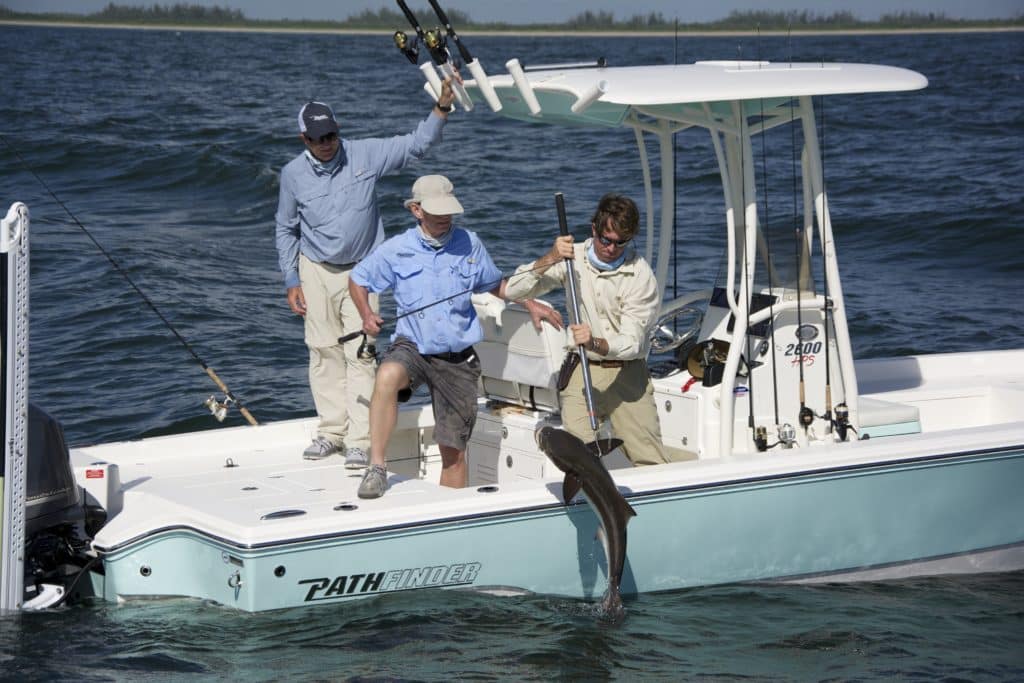
Cobia Fishing at Nearshore Wrecks
Another vital element to some cobia hounds is the perfected use of Minn-Kota iPilot technology, which eliminates cumbersome anchoring scope. “Anchoring is such a waste of time, and cobia schools on a wreck move in big circles,” Eden says. “With my iPilot I can Spot-Lock over bait or a pod of cobia, and drop a jig right on them. If bait or cobia move on a wreck, I use my electric motor to work around the structure until I locate fish again, then hold in the place again. It saves time, and cobia never spook.”
Many anglers use large, heavy cobia jigs exclusively, festooned with a natural bait, like cuttlefish or menhaden, or with a 7- or 8-inch soft-plastic tail. Rarely does anyone use live bait instead of cobia lures. If Scott Jones can get winter live bait, he’ll chum a reef to find cobia and get them feeding.
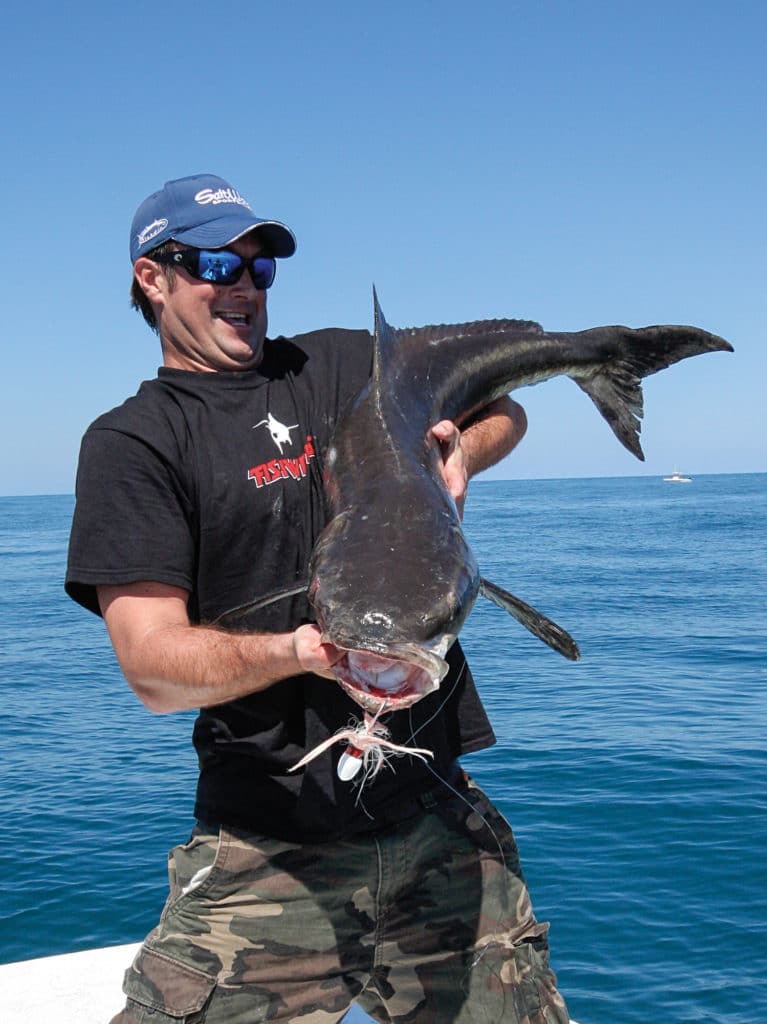
Speed Jigging for Cobia
Most reef cobia jiggers rely on speed jigging to quickly get the attention of fish and trigger strikes. Jacksonville’s Arun Ramalingam, one of the area’s best cobia deep jiggers, believes all the best tackle and lures are for naught unless anglers present lures effectively. “I try different retrieves until I find one that fish want,” he explains. “I watch the marks on sonar and drop a jig 20 feet below the fish. Then I slowly bring it up. I’ll try different retrieve speeds from fast to slow. Most strikes occur when the jig falls.”
When cobia are on the bottom, or when blind-fishing, Ramalingam allows a jig to hit bottom. Then he lifts his rod to make the lure rise, then fall. He tries different lure speeds and jigging tempos, working the lure a quarter of the way back to the boat, then drops it back to the bottom again.
“Often when cobia take a jig you don’t feel much, but the lure weight vanishes,” says Ramalingam. “Cobia hold a jig like they do a crab, and when that lure weight is gone, it’s important to strike hard and fast. Use tight drag to move fish to the surface, away from anything that cuts line.” Horsing cobia off bottom early in a fight is wise since fish commonly weigh 40 pounds, and 60-pounders are boated every year.
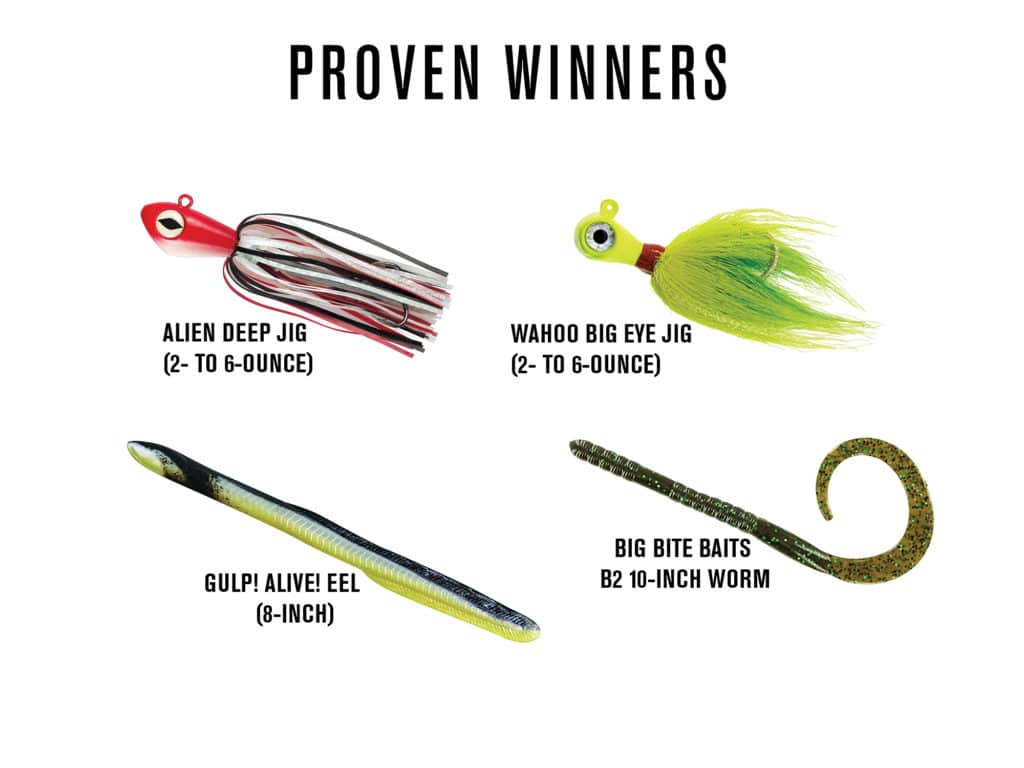
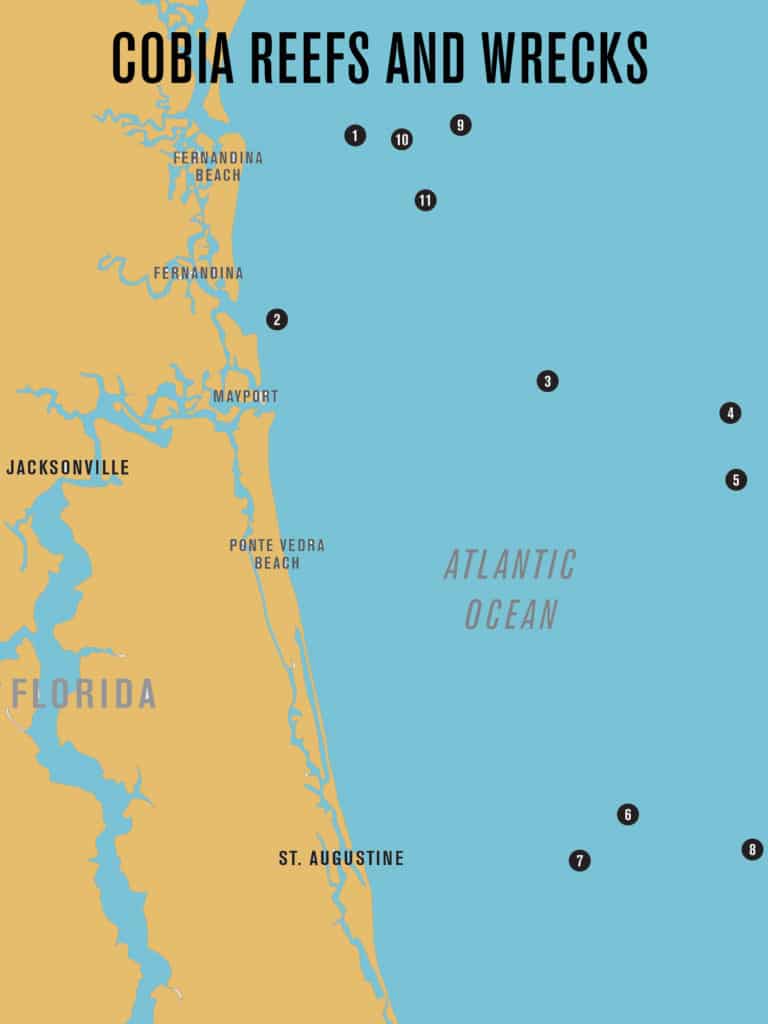
Cobia Fishing Spots off Mayport Inlet
· 9-Mile Reef, 52-foot tugboat: 63 feet deep; 30° 39.483’N, 81° 17.166’W
· Jax Beach Wreck, culverts: 75 feet deep; 30° 27.891’N, 81° 22.988’W
· Gator Bowl Press Box: 80 feet deep; 30° 23.840’N, 81° 03.330’W
· BR Reef, Ferry: 110 feet deep; 30° 21.714’N, 80° 49.975’W
· Casablanca, 350-foot ship: 115 feet deep; 30° 17.507’N, 80° 49.318’W
Cobia Fishing Spots off St. Augustine
· Dorothy Louise Barge: 70 feet deep; 29° 56.300’N, 80° 57.400’W
· Desco Culverts: 78 feet deep; 29° 53.360’N, 81° 00.810’W
· Intruder Reef: 104 feet deep; 29° 54.339’N, 80° 48.167’W
Cobia Fishing Spots off Fernandina Beach
· Sahlman’s Gulley Barge: 60 feet deep; 30° 40.116’N, 81° 09.560’W
· Whittaker’s Snapper Hole Tug: 60 feet deep; 30° 39.338’N, 81° 13.874’W
· FC Culverts: 70 feet deep; 30° 36.447’N, 81° 11.725’W
North Florida Cobia Fishing Captains
· MAYPORT, Capt. Jeff Crabtree, 904-759-1033, facebook.com/RightSpotCharters
· ST. AUGUSTINE, Jodie Lynn Charters, 904-540-2628, jodielynncharters.com
· FERNANDINA BEACH, Capt. Alan Mills, 904-261-9481, accharters.net
Cobia Fishing Tackle
Rods: Tsunami Airwave 6-foot-6-inch conventional jigging rod for 2½- to 7-ounce lures; Star Stellar Lite 8-foot rod for 5⁄8- to 2-ounce lures; Star 6-foot spinning jig rod rated for 200-pound line and 11½-ounce jigs
Reels: Daiwa Saltist 40H; Penn Battle 6000; Shimano Saragosa 25000 or equivalent
Line: 50-pound braid connected with a double uni-knot to 18 inches of 80-pound fluorocarbon leader, or 4 feet of 80-pound fluorocarbon connected to the braided line with an FG knot. Then use a Rapala knot to tie on the jig.
Lures: Wahoo Big Eye Jigs, Blue Water Candy cobia jigs, and Alien Deep Jigs, 2- to 8-ounce in white, blue, chartreuse, red, pink or combinations of these colors. Bucktails are preferred over nylon skirts, often with soft trailers, like an 8-inch Gulp! Alive! eel, Big Bite Baits B2 10-inch worm, or Fishbites strips in shrimp, clam or crab flavors. For shallower beach fishing, neutral-buoyancy Wahoo Vamp jigs with a whole squid or menhaden are also deadly.
Cobia Fishing Tips
· Good-size cobia make definitive sonar marks over reefs and wrecks. Watch for them, plus clouds of baitfish.
· Cobia love to tag along with manta rays. Any time you spot some of the cruising giants, check for cobia below.
· When you hunt cobia along beaches, tide rips or wrecks, don’t waste more than 30 minutes on unproductive spots.

